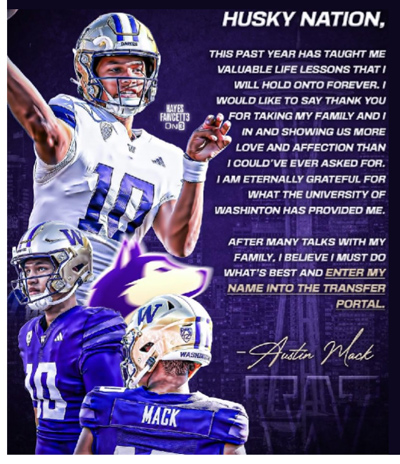
NIL: Then and Now
The adoption of NIL in 2021 expanded the ability of all athletes to profit from their personal performance. Giving them more control over their financial future and enhancing their marketing potential through brands and other marketplace opportunities not yet determined.
Collegiate athletics has undertaken a transformative shift in the past few years, particularly with Name, Image, and Likeness (NIL). The contrast in the NIL landscape between 2021 and 2024 highlights student rights and the rapid evolution of policy change.
2021 broke the mold by allowing students to profit from their name, image, and likeness. This policy shift marked a departure from the traditional amateurism model that had long restricted athletes from profiting with their personal brands. Initial stages of NIL brought challenges and questions whether there would be fair compensation or exploitation on the dynamics of the level of success and opportunity.
THE TRANSFER PORTAL
Navigating through the transfer portal has proven to be a gamechanger for collegiate athletics. The re-sharing of the transfer portal is conducted through the NCAA within guidelines to ensure that recruiting efforts are in compliance. To better explain the portal and recruitment process, when an athlete enters the transfer portal their name then becomes visible to all coaches from all universities. A student athlete attempting to enter the portal must coordinate with the compliance officer of their current institution once they’ve decided their time with that college is complete.
Let’s look at recruitment and visibility within the transfer portal. The transfer protocol is streamlined to allow coaches and other athletic personnel to express interest in the talent to further advance the team’s roster. This heightens player visibility once the player decides to enter the transfer portal. An athlete will be contacted by the organization’s coach if they express interest in the player. The process would take place through a formal request within ethical guidelines and NCAA regulations. Keep in mind that not every decision to enter this portal will result in a guaranteed transfer. It is wise for a student to explore other options especially when making an altering decision in their sports career.
The University of Washington’s Austin Mack (#10), 6’6” freshman from Loomis, CA, has announced his transfer as of January 14th and has entered the portal. Late this past week, he announced his transfer to Alabama, following Coach DeBoer. Photo Credit: Austin Mack, IG: @lilmack_2
Additionally, Will Rogers, a Mississippi State record-setting QB had previously transferred from Mississippi State to Washington and since then decided to enter the portal once again. (Just before news item was finalized, Rogers announced he was going to stay at UW.)

CONTROLLING THEIR BRAND
This groundbreaking change brought on the ability to secure endorsement deals through an athlete’s personal brand and NIL potential.
As we reflect on 2021 and all it had to offer, we welcome 2024 with a broader acceptance of athletes as influencers and entrepreneurs. An athlete’s identity is now more visible with each unique story, further aligning with the target audiences who resonate with them. This builds authentic partnerships and marketable identities.
NEW POSSIBILITIES
Fair compensation and equitable opportunities for athletes in non-revenue generating sports maintain balance in endorsements and academics which continue to be issues for discussion.
NIL has shown resilience and adaptation in the few years that have passed. The NIL space continues to evolve as an influential force. NIL and the portal, reshape the dynamics of college sports and provide opportunities to student athletes helping them secure their financial futures.
High profile sports such as basketball or football have been significantly impacted by the transfer portal and NIL. Rules and eligibility are integral aspects of the NCAA governing transfer eligibility for athletes seeking the right opportunities. These features define the landscape of collegiate sports in 2024.
NIL, Then and Now
The adoption of NIL in 2021 expanded the ability of all athletes to profit from their personal performance. Giving them more control over their financial future and enhancing their marketing potential through brands and other marketplace opportunities not yet determined.
